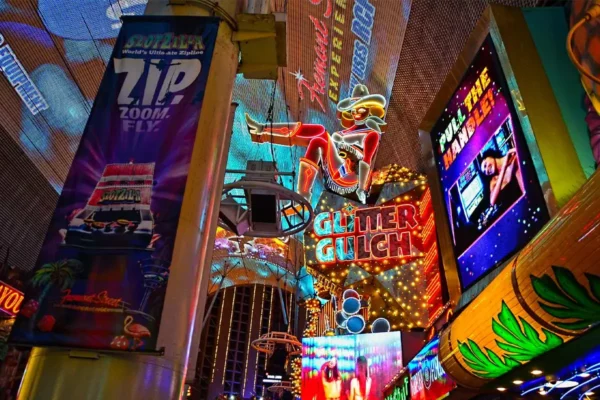Although it’s unlikely that anyone’s five-year plan foresaw a year of lockdowns and a government forbidding citizens the right to work at their chosen profession—ironically, this story that originally appeared in ECN’s 25th Anniversary issue, was prescient in the exponential growth of virtual and hybrid tradeshows…
Trends Expected to Shape the Future of Tradeshows
by Cynthya Porter
Thirty or so years ago, tradeshows were viewed with a palpable disdain by many in the C-suite who regarded them as marginally successful, inordinately expensive, and little more than boondoggles for managers and existing customers. Some—painting tradeshows as having woefully little value to the company—openly lamented the pressure to attend for the sake of image alone and said wistfully how they wished they could just dump the money into operating profits instead. In one such article in 1983, the Harvard Business Review famously quoted Burton Salomon of Manhattan Industries saying, “Everything nowadays is done for the show management, not for the exhibitors. The only other ones to get anything out of tradeshows are the hotels and the prostitutes.”
Imagine Salomon’s surprise if he were to happen upon a show floor today. Not only would it look dramatically different with its soaring displays and multimedia-infused clamor, but it would be different, with an entirely revived position in every company’s best marketing plans. To wit, in 1979, the Harvard Business Review counted some 7,857 tradeshows in the United States with a total spend of roughly $6 billion. The most recent figures available say those numbers today are closer to 13,000 shows and around $14 billion, though the International Association of Exhibitions and Events (IAEE) says the total halo effect of the exhibition industry a whopping $97 billion.
It would be difficult to say what provoked growth over the past few decades, though it’s likely to have started with emerging products, budding trends and shifting ideologies that were in their infancy when Salomon and others made their observations. So, then, with 25 years of industry transformation under its belt, Exhibit City News is looking to the future and postulating what budding factors will shape the next 25 years to come.
- Sustainability
A few years ago, the Green initiatives in the tradeshow universe were viewed by more than a few as a fad, fringe movement without a practical purpose or a tangible result. Going Green was expensive and there didn’t seem to be much of an attendee outcry over the fact that exhibition industry as a whole is considered the second most wasteful industry in the country behind construction. But that 600,000 tons of garbage—most of which ended up in landfills—began to weigh heavy on the environmentally conscious generations entering the workforce in more recent years and they began to sound a drumbeat for change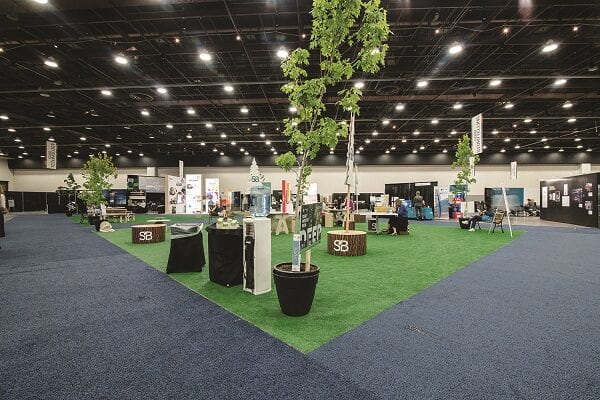 .
.
That movement got real for corporations when studies revealed that people, especially millennials, are increasingly likely to look for companies that share their social values to do business with. In fact, a large number of them say shared values would generate loyalty for a company even if its costs were higher than competitors. With that being the case, growing alarm over pollution, waste and climate change have caused a globe-sized pivot for the exhibition industry. Now, a company’s sustainability and environmental conservation practices are just as important for many as the price and quality of its widgets.
Booth materials are becoming recyclable, tchotchkes are becoming reusable, and food service operations are turning to compostable silverware and plant-based meats. This progression towards environmental responsibility shows no signs of slowing, with even the frequency of air travel coming under fire. “Flight shaming” is an emerging mindset that challenges the necessity of many of the world’s 38 million flights per year. The combination of flight shaming and improvements in virtual and augmented reality could have a significant impact on the structure of the exhibition industry going forward.
- Personalized Experiences
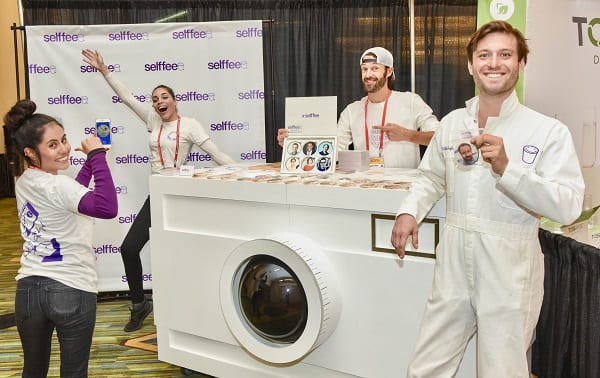 A few decades ago, people were enamored with the newfound anonymity of the digital world and many relished the privacy generated by things like avatars and nickname-based email addresses. The invisibility cloak provided by the internet depersonalized virtually everything, particularly in the world of business relationships, and that was just fine for most Gen Xers. Professionals entering the workforce today, however, are more likely to view that anonymity with distrust. They want to do business with people who understand them and share their values, not corporations. Their expectation of privacy has been demolished thanks to internet tracking,and studies show they increasingly crave face-to-face interaction and engagement that seems personally designed for them.
A few decades ago, people were enamored with the newfound anonymity of the digital world and many relished the privacy generated by things like avatars and nickname-based email addresses. The invisibility cloak provided by the internet depersonalized virtually everything, particularly in the world of business relationships, and that was just fine for most Gen Xers. Professionals entering the workforce today, however, are more likely to view that anonymity with distrust. They want to do business with people who understand them and share their values, not corporations. Their expectation of privacy has been demolished thanks to internet tracking,and studies show they increasingly crave face-to-face interaction and engagement that seems personally designed for them.
The movement towards personalized experiences provided on the tradeshow floor has taken many forms—from portraits painted in cappuccino foam to customizable scents and lighting during booth visits. Also, more and more displays are focused less on demo stations and more on creating a comfortable place for attendees to relax in an effort to foster that interpersonal relationship so prized today. Gamification, tactile experiences, services like massage and USB ports —there are a multitude of ways exhibitors are increasingly working on that human connection. But technology experts predict this is just a tiny glimpse of the personalization to come.
Radio Frequency Identification (RFID), Near Field Communication (NFC), and Bluetooth technology are finding their way to the mainstream show floor, unlocking content by proximity that, in a growing number of cases, has been customized to a particular attendee. Beacon technology, a relative newcomer, is fine-tuning that personalization by allowing attendees to control the information that is delivered to them as well as communicate with other attendees. Artificial Intelligence (AI) is evolving into another tool for personalization, particularly when combined with attendee data and mapping technology provided by RFID and NFC. Rather than just recite pre-programmed information, AI conceptually has the ability to tell where attendees ate lunch, which booths they stopped at, and what their pain points are as evidenced by the sessions they are attending and material they are reading.
But technology visionaries like Mark Zuckerberg and Elon Musk think this is only the beginning, with AI eventually able to be hardwired into a person’s brain to address what they’re thinking without them having to ask. An attendee experience really can’t get more personal than that and some of the world’s brightest technology minds say it’s coming.
- Augmented Reality and Virtual Reality
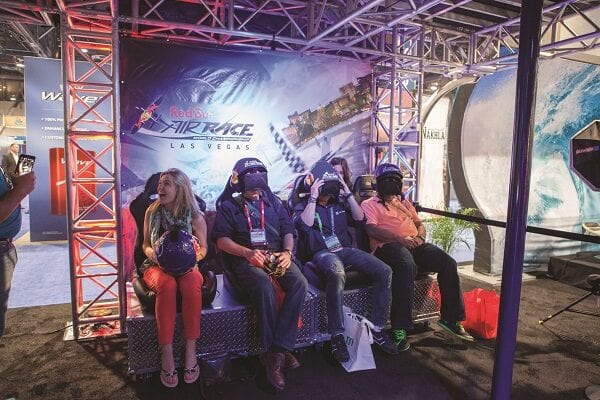 Both have been swirling around the show floor for some time, but the technology is still scarce enough that a primer is in order, as they are expected to impact the exhibition industry differently. Augmented reality is a computer-generated view superimposed over a real view of the world, creating a composite view. Virtual reality is complete immersion into a digitally created environment, often with the aid of a headset or glasses. Mixed reality, an emerging technology, is a combination of both.
Both have been swirling around the show floor for some time, but the technology is still scarce enough that a primer is in order, as they are expected to impact the exhibition industry differently. Augmented reality is a computer-generated view superimposed over a real view of the world, creating a composite view. Virtual reality is complete immersion into a digitally created environment, often with the aid of a headset or glasses. Mixed reality, an emerging technology, is a combination of both.
Historically, the technology has been expensive to use and somewhat unrefined, making it more of a novelty than a staple in the business of exhibitions. But pundits say it is advancing at an accelerated rate, bringing up quality while bringing down cost, and both styles of altered reality are expected to eventually dominate not only the show floor, but everyday life.
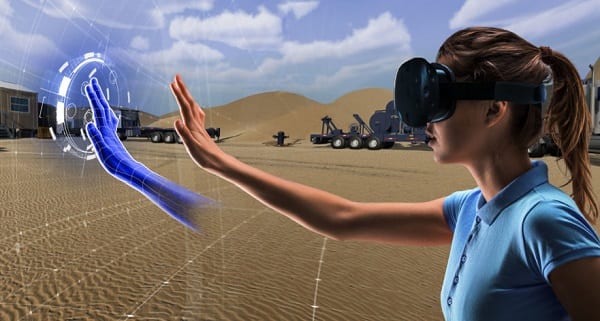 As budgets wane and costs for travel rise, not to mention the proliferation of flight shaming that is taking place, pressure will intensify on attendees to find alternative ways to gather the information available at a tradeshow. The world of virtual reality is perfect for creating an experience that is completely immersive—whether that virtual environment is created by a single exhibitor or a show organizer. Not unlike video games that livestream players from remote locations, a virtual reality tradeshow is expected to eventually replicate the show floor experience in astonishing detail. But rather than looking at 3D models of products not practical to display in an exhibit, attendees to the virtual show could walk through the corridors of architectural samples or sit in the cockpit of a new aircraft. The possibilities are literally unlimited for virtual reality and it is expected to explode in the coming years.
As budgets wane and costs for travel rise, not to mention the proliferation of flight shaming that is taking place, pressure will intensify on attendees to find alternative ways to gather the information available at a tradeshow. The world of virtual reality is perfect for creating an experience that is completely immersive—whether that virtual environment is created by a single exhibitor or a show organizer. Not unlike video games that livestream players from remote locations, a virtual reality tradeshow is expected to eventually replicate the show floor experience in astonishing detail. But rather than looking at 3D models of products not practical to display in an exhibit, attendees to the virtual show could walk through the corridors of architectural samples or sit in the cockpit of a new aircraft. The possibilities are literally unlimited for virtual reality and it is expected to explode in the coming years.
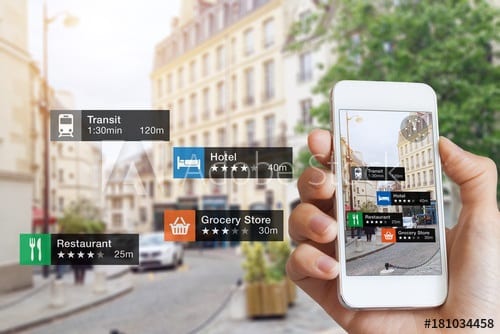 For attendees, a sophisticated augmented reality platform could create speakers, performers, demonstrations and more as they walk the show floor. But where they are currently required to use a tiny smartphone screen and an app to see the augmented space, in the future it could be as simple as donning a pair of specialty glasses. This is the point, technology mavens say, when augmented reality and virtual reality will begin to mix, as something like glasses will allow an immersive environment that a smartphone screen will not. Add in AI, and it’s quite possible that we can’t even imagine yet what technology will be capable of in 25 years.
For attendees, a sophisticated augmented reality platform could create speakers, performers, demonstrations and more as they walk the show floor. But where they are currently required to use a tiny smartphone screen and an app to see the augmented space, in the future it could be as simple as donning a pair of specialty glasses. This is the point, technology mavens say, when augmented reality and virtual reality will begin to mix, as something like glasses will allow an immersive environment that a smartphone screen will not. Add in AI, and it’s quite possible that we can’t even imagine yet what technology will be capable of in 25 years.
So great is the evolution of augmented and virtual reality supposed to be that there is even speculation that eventually we will have trouble discerning what is real and what is not. But one thing definitely real: Exhibitors will be provided an unforgettable way to engage an attendee on the show floor—no matter whether it’s physical or virtual.
- Attendee Data Management
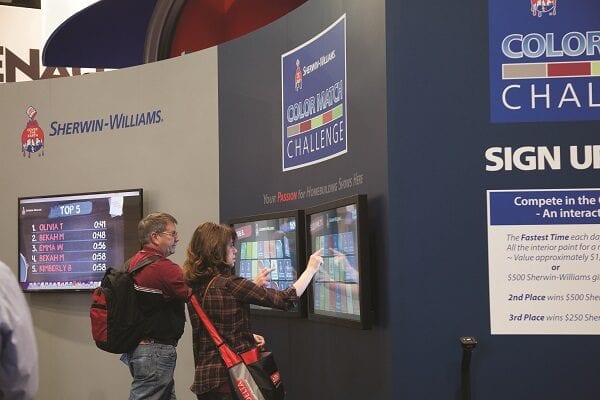 For as long as there have been tradeshows, exhibit managers have struggled to collect and use data from attendees, though it’s not for lack of trying. Consider this: A Google search of the term “lead capture” turns up nearly a million results—so there’s plenty of reading material out there for those trying to get it right. But event experts say it won’t be pep talks, but rather advances in lead management systems, that finally make good lead management a reality.
For as long as there have been tradeshows, exhibit managers have struggled to collect and use data from attendees, though it’s not for lack of trying. Consider this: A Google search of the term “lead capture” turns up nearly a million results—so there’s plenty of reading material out there for those trying to get it right. But event experts say it won’t be pep talks, but rather advances in lead management systems, that finally make good lead management a reality.
Systems emerging today do much more than the primitive badge scanners of years gone by. They qualify leads, add salesperson notes, send collateral, deliver custom emails and upload every minutia of information to a cloud customer management system. Those products are making their way into the common area of exhibitry, but an attitudinal shift will need to accompany them for their use to be widespread.
According to the Center for Exhibition Industry Research, only about a quarter of exhibit managers even know what happens to the leads collected at a show. Exhibit Surveys finds that 87 percent of show leads are never effectively followed up on, and researchers at Fish Software say that the average exhibitor takes 26 days to follow up on a lead collected at an exhibition. For companies with increasing pressure to demonstrate the return on investment for exhibiting, these statistics suggest they have obviously not been hitting it out of the park as a general rule. But a growing abundance of user-friendly ways to collect and process leads leaves critics hopeful that the coming years will find new rigor for managing and following up on attendee information.
Expected to complicate that will be the General Data Protection Regulation—a set of personal data rules already in place for the European Union but expected to sweep the world in the coming years. In short, the regulations limit the way an individual’s data can be collected, used and shared. They currently apply to all EU residents and any companies worldwide trying to do business with them.
While personal data protection is generally regarded as a good thing, instituting a system for managing the data on individuals in compliance with GDPR will be expensive for many corporations not prepared to do so. Among the regulations are that a company must gain (and be able to show) explicit consent for the collection of personal data—including phone numbers or email addresses—and obtain specific permission for how the company may contact a person going forward. Also, a person may ask to review the information a company maintains about them and may ask to have that data purged from the system for any reason. For companies just perfecting their data collection, it adds a wrinkle that will need to be considered.
When it comes to how the tradeshow industry evolves over future decades, there are a great many variables that might come into play. Trade wars, health pandemics, climate change, data security and the pace at which “reality” technology develops will all have a seat at the table, as will the economy and, of course, Generations Z and Alpha. Researchers have speculated that the coming generations will be like millennials on steroids, but no one is saying that’s a bad thing. After all, the desire of incoming workforces for face-to-face marketing is part of what is ruddering this industry forward and ensuring it flourishes as a useful business tool for all sorts of professionals— except for, that is, prostitutes.
This story originally appeared in the Special 25th Anniversary issue of Exhibit City News, p. 218-221. For original layout, visit https://issuu.com/exhibitcitynews/docs/ecn_25th_anniversary













